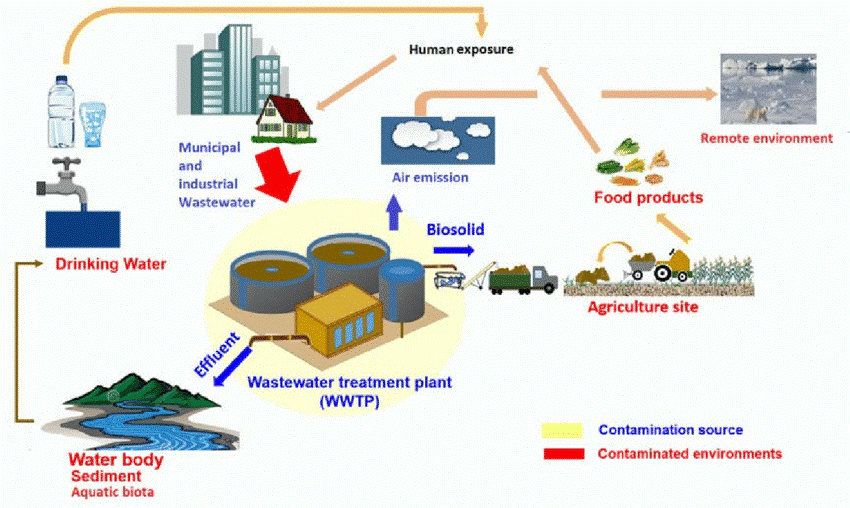M270 PFAS Treatment for Eco-Friendly Waste Management
M270 PFAS Treatment for Eco-Friendly Waste Management
Blog Article
Advanced Techniques for Reliable PFAS Contamination Removal
The consistent difficulty of PFAS contamination demands the exploration of sophisticated removal techniques that can efficiently attend to these unsafe compounds. Innovative technologies, such as innovative oxidation processes and various adsorption techniques, have arised as appealing solutions in mitigating PFAS from influenced environments.
Recognizing PFAS Features
Although per- and polyfluoroalkyl materials (PFAS) have been widely made use of in different industrial and consumer items as a result of their unique residential or commercial properties, their determination in the environment positions substantial challenges to public health and wellness and security. PFAS are a group of artificial chemicals defined by a carbon-fluorine bond, one of the greatest chemical bonds known, which contributes to their extraordinary security and resistance to degradation. This stability enables PFAS to collect in the environment and living microorganisms, bring about possible adverse health effects.
These same residential or commercial properties add to their ecological determination, as PFAS do not easily break down via all-natural procedures. Comprehending the chemical residential or commercial properties of PFAS is vital for creating effective strategies to manage and alleviate their environmental effect.
Innovative Removal Technologies
The persistence of PFAS in the setting has spurred the advancement of cutting-edge remediation technologies targeted at properly getting rid of these impurities from impacted ecological communities. Amongst one of the most promising approaches are innovative oxidation procedures (AOPs), which use powerful oxidants to break down PFAS compounds into less dangerous materials. AOPs can be customized to target particular PFAS frameworks, enhancing their effectiveness.
An additional arising technology is using adsorption media, such as activated carbon and ion exchange resins, which can precisely capture PFAS from polluted water. These products have shown significant elimination effectiveness, although periodic replacement and regrowth are required to preserve efficiency.
Membrane layer purification techniques, including reverse osmosis and nanofiltration, are likewise getting grip in PFAS removal. These approaches can properly separate PFAS from water, offering a sensible service for treating infected sources. Additionally, thermal treatment approaches, such as incineration, can decompose PFAS into non-toxic by-products, though they require careful monitoring to manage exhausts.
Jointly, these ingenious remediation technologies stand for substantial developments in the recurring fight against PFAS contamination, providing various techniques to bring back damaged environments and safeguard public wellness.

Bioremediation Methods
Bioremediation methods provide an encouraging strategy to resolving PFAS contamination by using the all-natural capacities of microbes to weaken these persistent substances (m270 waste management). This technique includes the use of bacteria, fungi, and various other microbes that can metabolize or change PFAS compounds right into much less unsafe results
Recent improvements in molecular biology and ecological microbiology have boosted visit this web-site our understanding of microbial communities and their potential duties in PFAS deterioration. Scientists Click Here are proactively discovering specific stress of microorganisms, such as Pseudomonas and Bacillus, which have actually shown the ability to damage down specific PFAS compounds.
In situ bioremediation techniques, where microbes are boosted directly in contaminated environments, can be specifically efficient. This technique frequently entails the application of nutrients or electron donors to promote microbial growth and activity. Furthermore, ex lover situ methods, such as bioreactors, enable for regulated conditions that can maximize degradation prices.
Regardless of the pledge of bioremediation, obstacles stay, including the intricate nature of PFAS compounds and the demand for extensive area screening - m270 waste management. Proceeded r & d will certainly be vital to refine these methods and analyze their performance in varied environmental contexts
Adsorption and Purification Techniques
Addressing PFAS contamination frequently involves utilizing adsorption and filtration approaches, which are created to get rid of these relentless chemicals from water and dirt. Among the different methods, triggered carbon adsorption is extensively made use of because of its high surface location and porosity, making it possible for effective capturing of PFAS particles. Granular activated carbon (GAC) systems are particularly preferred for dealing with huge volumes of polluted water, while powdered activated carbon (PAC) can be used for smaller-scale applications.
Ion exchange resins browse around this web-site likewise reveal guarantee in PFAS removal, functioning by trading PFAS ions with much less unsafe ions in the water. This method has actually shown efficiency in concentrating PFAS compounds, facilitating their succeeding elimination. Furthermore, membrane layer filtering techniques, such as reverse osmosis and nanofiltration, run by utilizing semi-permeable membranes to separate PFAS from water, properly reducing their concentrations.
While these approaches are effective, they must be thoroughly picked based upon the particular PFAS compounds existing and the environmental context. Continuous improvements in materials science and design are causing the development of novel adsorbents and filtration systems that enhance removal performances and minimize operational prices, thus enhancing general remediation initiatives.
Regulatory and Plan Factors To Consider
Just how can efficient regulative frameworks enhance the management of PFAS contamination? Comprehensive plans are necessary to ensure a coordinated and robust reaction to the difficulties posed by per- and polyfluoroalkyl compounds (PFAS) Rules can establish clear guidelines for tracking, reporting, and remediating PFAS-contaminated websites, cultivating liability among sectors and public entities. (m270 waste management)

In addition, financial incentives and gives can be integrated right into plans to encourage the adoption of sophisticated remediation innovations. Policymakers ought to additionally prioritize research and advancement, making sure that emerging methods for PFAS elimination are confirmed and implemented successfully.
Moreover, public recognition and involvement are essential parts of any regulative technique, equipping areas to advocate for their wellness and security. Ultimately, a well-structured regulatory environment will certainly not just boost the monitoring of PFAS contamination yet additionally promote lasting practices that protect future generations.
Verdict
In recap, the complexity of PFAS contamination demands the fostering of advanced removal techniques. Continued study and growth in this area remain essential to dealing with the obstacles posed by PFAS contamination.
Report this page